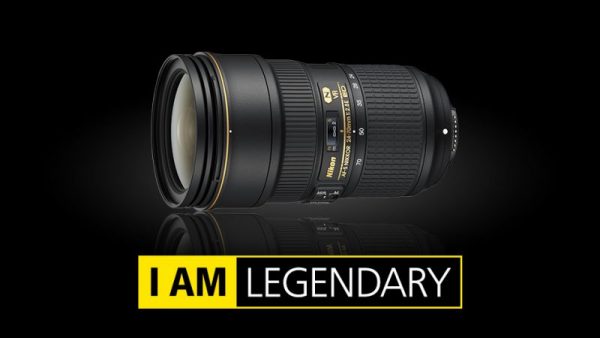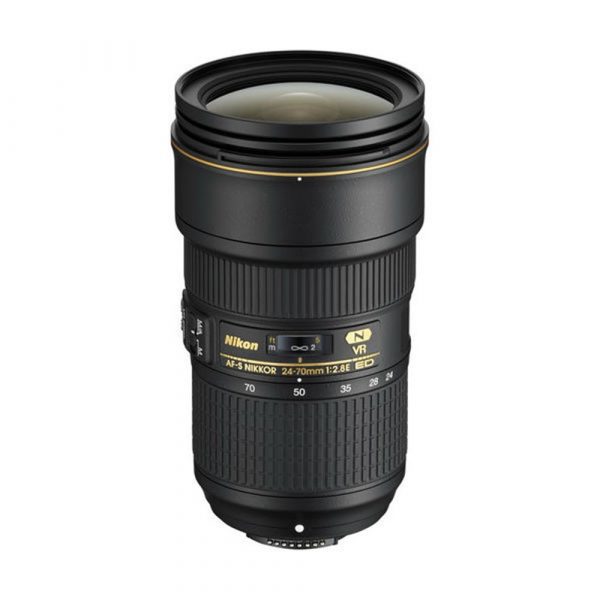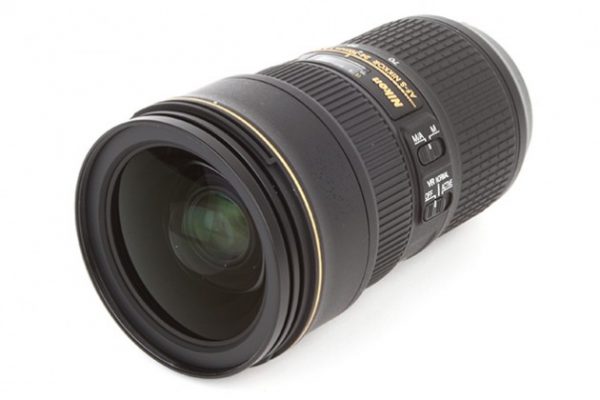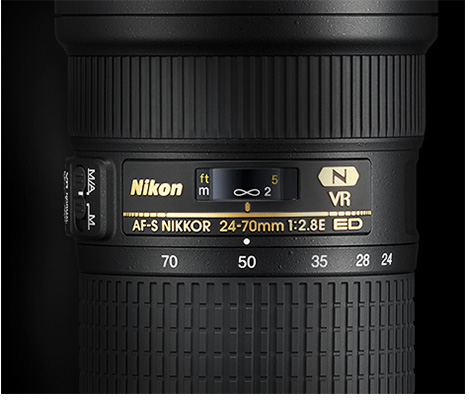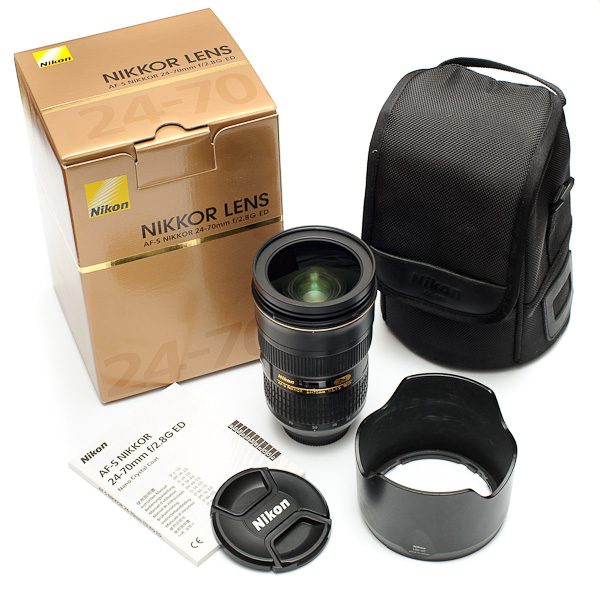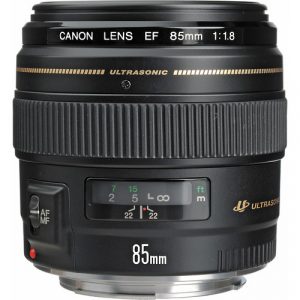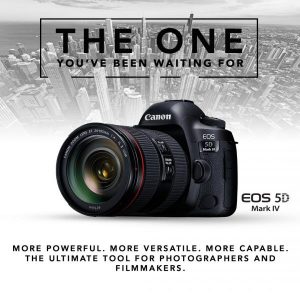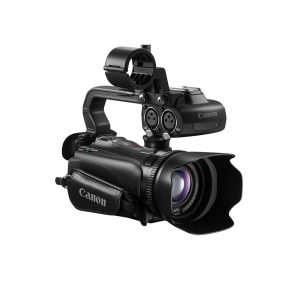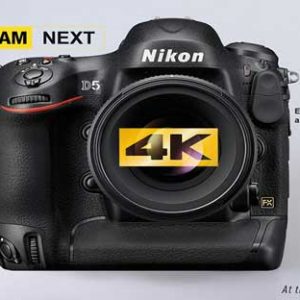Nikon AF-S NIKKOR 24-70mm f/2.8E ED VR Lens
Availability:
In stock
PRODUCT HIGHLIGHTS
- F-Mount Lens/FX Format
- Aperture Range: f/2.8 to f/22
- ASP/ED, AS, ED, and HRI Elements
- Nano Crystal & Super Integrated Coating
- Fluorine Coated Front and Rear Elements
- Silent Wave Motor AF System
- Vibration Reduction Image Stabilization
- Internal Focus, Manual Focus Override
- Electromagnetic Diaphragm Mechanism
- Rounded 9-Blade Diaphragm
Nikon AF-S FX NIKKOR 24-70mm f/2.8E ED Vibration Reduction Zoom Lens with Auto Focus for Nikon DSLR Cameras
Stunning performance. Newfound inspiration.
Super steady and always ready, the AF-S NIKKOR 24-70mm f/2.8E ED VR workhorse is prepared to take your work to the next level. With up to 4 stops* of VR (Vibration Reduction) image stabilization, you can capture sharp, steady handheld stills and HD videos, and shoot at slower shutter speeds in low-light situations without sacrificing sharpness. Pair it with a Nikon full-frame high-resolution DSLR to capture the decisive moment with a thrilling balance of sharpness and soft blur effects. Covering the sweet spot of the zoom range with a fast f/2.8 constant aperture, you’ll be ready for everything from environmental portraits, studio photography, landscape, architecture (exteriors and interiors), press events and weddings.

In pursuit of ultimate image quality
Optical precision to the edge of the frame
A first for NIKKOR lenses, a new Aspherical Extra-Low Dispersion (ASP/ED) element is paired with traditional AS, ED and HRI elements for a thrilling new level of optical precision. Photos and videos take on a beautiful balance of sharpness and soft blur effects, virtually free of flare, ghosting, coma, chromatic or spherical aberration, even at the far edges of the frame. For those who thrive on image quality, the AF-S NIKKOR 24-70mm f/2.8E ED VR delivers.

The go-to lens
Versatility, speed and durability
24-70mm is the sweet spot of the zoom range for many photographers, great for everything from landscapes and studio work to weddings and press events. The f/2.8 constant aperture allows for faster shutter speeds to freeze fast action, renders a beautiful bokeh blur and performs brilliantly in low light. Add an electromagnetic diaphragm for fast auto-exposure control plus the protection of Nikon’s fluorine coat on the front and rear glass, and you’ve got the ultimate workhorse for nearly any situation.

Steadier than ever
4.0 stops of Vibration Reduction*
To complete the evolution, the AF-S NIKKOR 24-70mm f/2.8E ED VR also includes Nikon’s Vibration Reduction image stabilization technology. It reduces camera shake and vibration up to ~4.0 stops*. Capture sharp, steady handheld stills and HD videos, and shoot at slower shutter speeds in low-light situations without sacrificing sharpness. Versatility, enhanced.
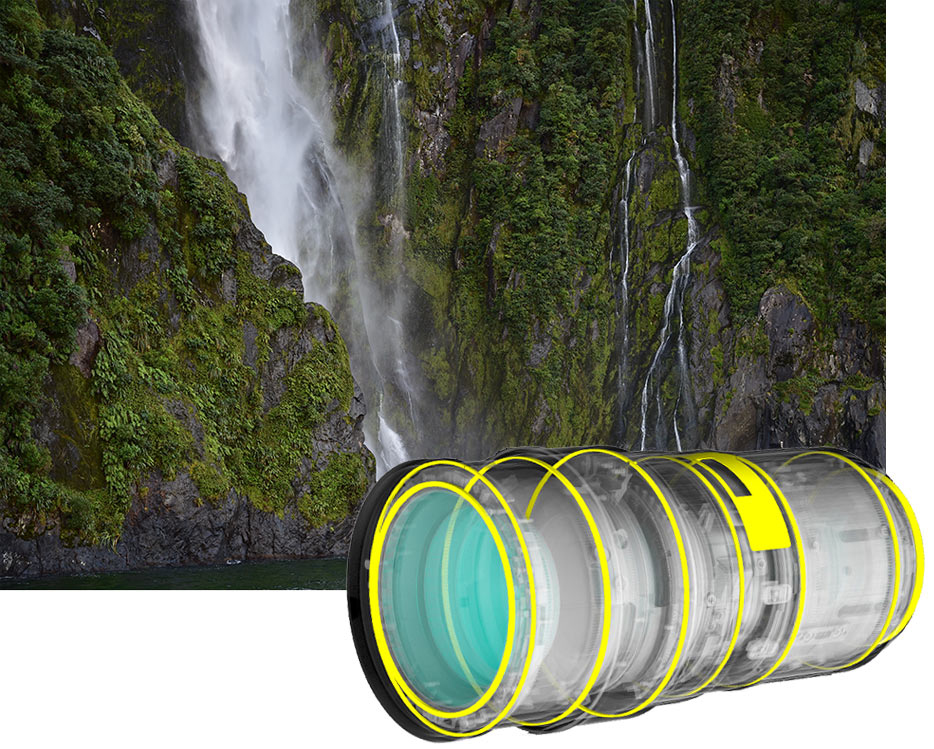
Built for demanding professionals
Capture the shot regardless of environment
With a highly durable build quality designed to withstand the severest shooting environments, Fluorine coatings on the front and rear elements for easy cleaning, a rear rubber gasket to help keep moisture out, the AF-S NIKKOR 24-70mm f/2.8E ED VR is ready for your toughest assignments.
The lens incorporates an electromagnetic diaphragm mechanism. The following cameras are compatible with this lens:
D5, D4 series, D3 series, Df, D810, D810A, D800 series, D750, D700, D610, D600, D500, D300 series, D7500, D7200, D7100, D7000, D5600, D5500, D5300, D5200, D5100, D5000, D3400, D3300, D3200, D3100, Nikon 1 J1, J2, J3, J4, J5 with FT-1, Nikon 1 V1, V2, V3 with FT-1, Nikon 1 S1, S2 with FT-1
Aspherical Lens
A lens with a curved, non-spherical surface. Used to reduce aberrations and enable a more compact lens size. Aspherical lenses minimize coma and other types of lens aberrations, even when used at the widest aperture. They are particularly useful in correcting distortion in wide-angle lenses and help contribute to a lighter, more compact design by reducing the number of standard (spherical) elements necessary. Aspherical lens elements correct these distortions by continuously changing the refractive index from the center of the lens.
Electromagnetic Diaphragm Mechanism
An electromagnetic diaphragm mechanism in the lens barrel provides highly accurate electronic diaphragm or aperture blade control when using auto exposure during continuous shooting. With conventional D/G type lenses, the diaphragm blades are operated by mechanical linkage levers.
ED (Extra-Low Dispersion) Glass
An optical glass developed by Nikon that is used with normal optical glass in telephoto lenses to obtain optimum correction of chromatic aberrations.
HRI
HRI stands for High Refractive Index Lens. With a refractive index of more than 2.0, one HRI lens can offer effects equivalent to those obtained with several normal glass elements and can compensate for both field curvature and spherical aberrations. Therefore, HRI lenses achieve great optical performance in an even more compact body.
IF Lens
A NIKKOR lens in which only the internal lens group shifts during focusing. Thus, IF NIKKORS do not change in size during AF operation, allowing for compact, lightweight lenses capable of closer focusing distances. These lenses will be designated with the abbreviation IF on the lens barrel.
M/A
Select NIKKOR lenses have a focusing mode which allows switching from automatic to manual focusing with virtually no lag time by simply turning the focusing ring on the lens. This makes it possible to seamlessly switch to fine manual focusing while looking through the viewfinder.
Nano Crystal Coat
An anti-reflective coating developed by Nikon that virtually eliminates internal lens element reflections across a wide range of wavelengths. Nano Crystal Coat solves ghost effects caused by red light and effectively reduces ghost and flare caused by light entering the lens diagonally.
Silent Wave Motor
AF-S NIKKOR lenses feature Nikon’s Silent Wave Motor (SWM). This technology converts “traveling waves” into rotational energy to focus the optics. This enables high-speed autofocusing that’s extremely accurate and super quiet.
Super Integrated Coating
Nikon Super Integrated Coating is Nikon’s term for its multilayer coating of the optical elements in NIKKOR lenses.
Nikon 24-70mm F/2.8 Specs
| Performance | |
|---|---|
| Focal Length | 24 – 70mm |
| Aperture | Maximum: f/2.8 Minimum: f/22 |
| Camera Mount Type | Nikon F |
| Format Compatibility | Nikon FX/35mm Film |
| Angle of View | 84° – 34° 20′ |
| Minimum Focus Distance | 1.25′ (38 cm) |
| Magnification | 0.28x |
| Maximum Reproduction Ratio | 1:3.57 |
| Elements/Groups | 20 / 16 |
| Diaphragm Blades | 9, Rounded |
| Features | |
|---|---|
| Image Stabilization | Yes |
| Autofocus | Yes |
| Physical | |
|---|---|
| Filter Thread | Front: 82 mm |
| Dimensions (DxL) | Approx. 3.46 x 6.08″ (88 x 154.5 mm) |
| Weight | 2.35 lb (1070 g) |
| Packaging Info | |
|---|---|
| Package Weight | 3.75 lb |
| Box Dimensions (LxWxH) | 9.449 x 5.827 x 5.669″ |
LCD, Video and Photo Gallery images are for illustrative purposes only.
How To Buy


